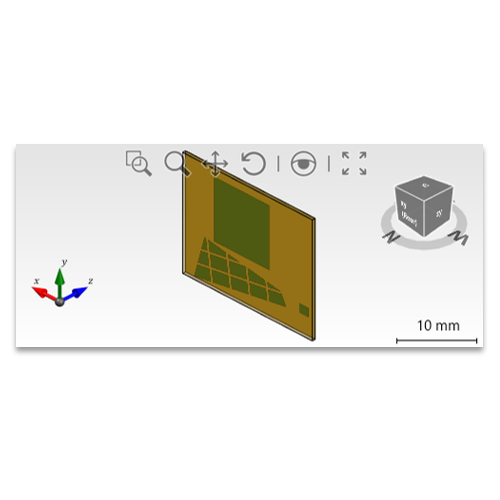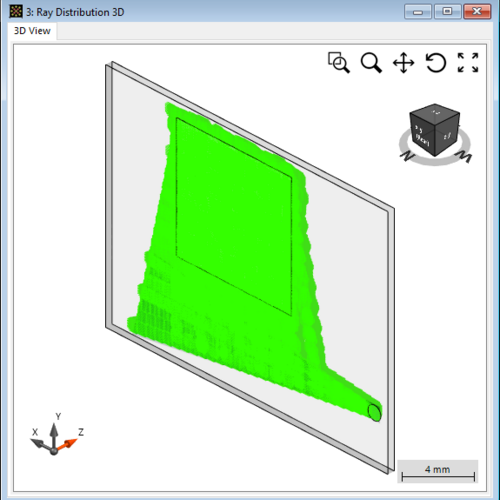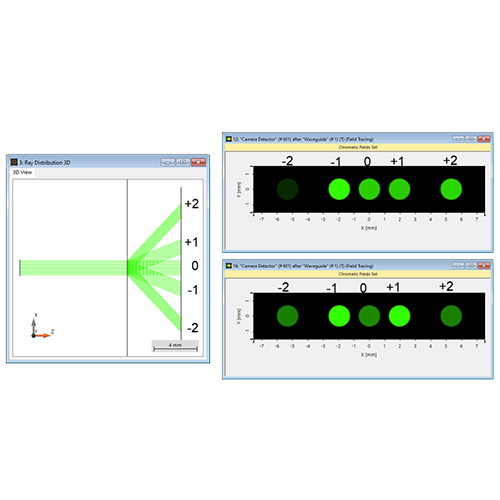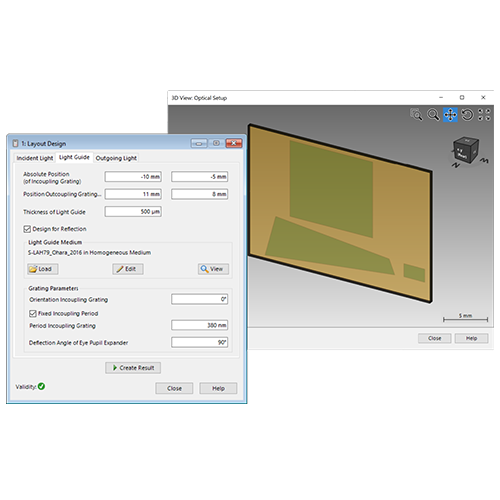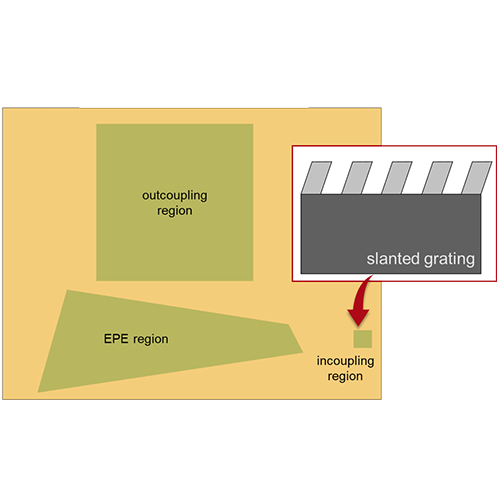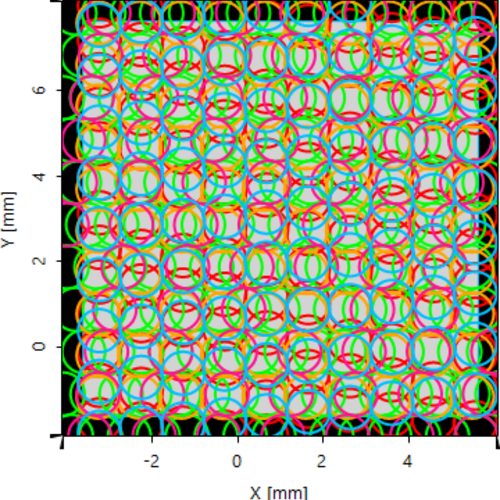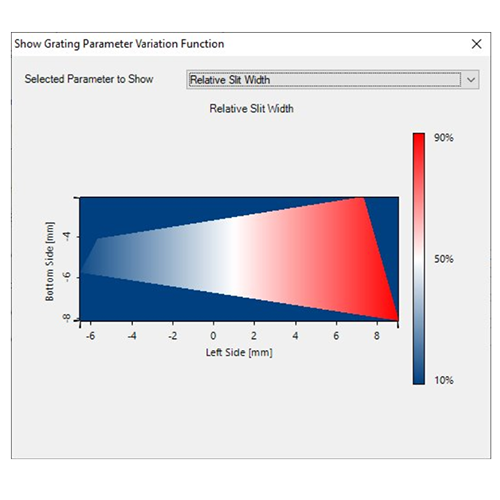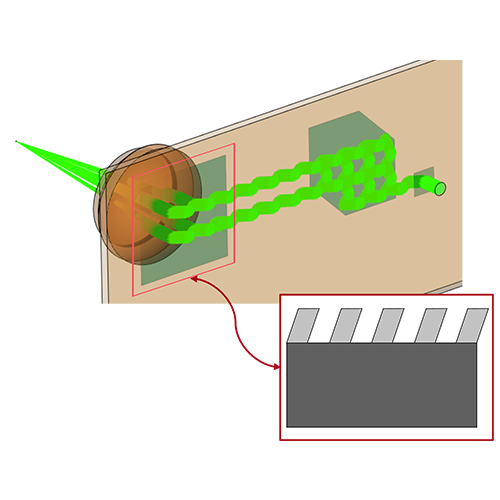Diffractive Lightguides
Use VirtualLab Fusions powerful Diffractive Lightguide solution to design, analyze and optimize all commonly available AR|VR|XR lightguide approaches in one platform. Including the seamless integration of electromagnetic grating effects, polarization, coherence, diffraction and interference.
Our non-sequential modeling concept automatically incorporates all necessary light paths and our advanced detectors calculate irradiance, uniformity, PSF/MTF and much more for multi-channel input at any eye position.

Design, Analyze,
Optimize.
One Platform for your Lightguide Solution.
- Multiscale & Non-sequential Modeling Approach
From microstructured grating over multi-reflection to the inclusion of macroscopic lenses for e.g. a human eye model – VirtualLab Fusions multiscale and non-sequential modeling approach incorporates the entire system: no data transfers or software interfaces are necessary.
- Precise Grating Simulation
Utilize rigorous grating solvers (FMM/RCWA) for accurate in- and outcoupling efficiency analysis. Our flexible stack and region definition enable seamless integration of gratings of any shape and at any position within the light guide – even modulated gratings are possible.
- Design & Optimization
Benefit from dedicated wizards, that help you design your layout, customizable merit functions (e.g., uniformity, efficiency), and advanced global evolutionary optimization algorithms to streamline your light guide system development.

Optimize and analyze even the most complex grating structures
with VirtualLab Fusion’s powerful grating tools.
Our flexible region system enables seamless placement of those gratings at any point within the light guide, ensuring precise control over optical performance.
Additionally, VirtualLab Fusion supports both step-wise and continuous variation of key grating parameters – such as fill factor and extension – allowing for tailored designs to meet your specific engineering requirements.

